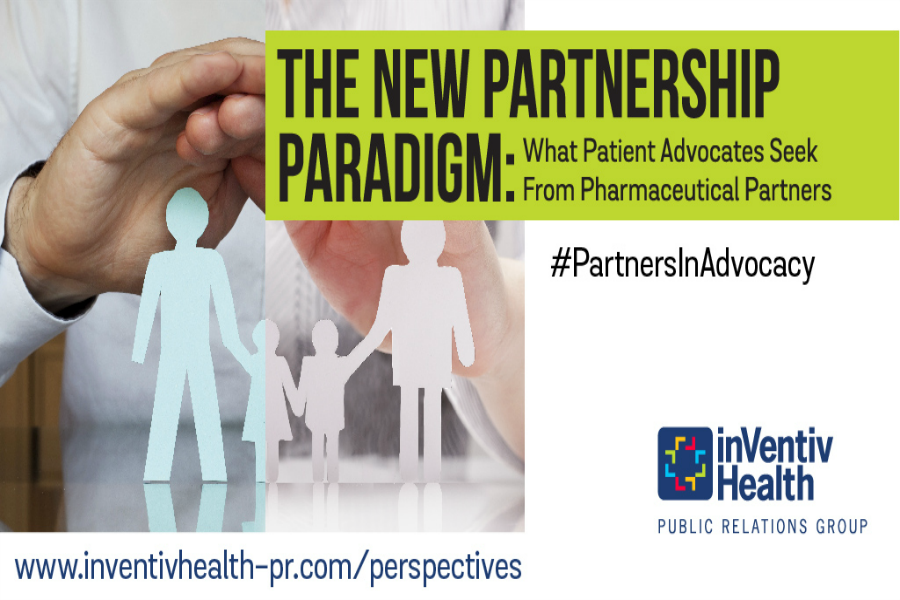Paul Holmes 19 Jan 2015 // 10:13AM GMT

There was a time when growth in healthcare was a sure thing, a great hedge against the cyclical nature of consumer and tech, with the spend increasing steadily regardless of events in the broader economy. But the past few years have changed all that, with increasing pressure from big buyers on prices, regulatory restrictions on marketing activities, and relatively few big blockbuster drugs in the pharma pipeline.
Is 2015 going to see a change in all that?
1. Health economics
Not so much, the experts say.
“Healthcare will be increasingly influenced, if not dominated, by discussions surrounding cost and value,” says Michael Rinaldo, managing director at dna communications. “Affordable healthcare is an issue that’s been around nearly as long as the Hippocratic Oath. But concerns about price, value and access are taking on momentum and urgency as a result of multiple market dynamics. Nearly all governments have stepped up their efforts to contain spending.”
In the US, he says, “patient co-pays are on the rise and physician sensitivity to pricing has never been more pronounced. In some categories like oncology, it’s rare to see a discussion about treatment that doesn’t include tough questions on cost and value. The battle lines are being drawn along the communications front.
“For healthcare communicators, it means there’s a need to be as proficient in economics as we’ve always been in reputation and marketing. Building a case for value is critical. Challenging short-sighted pricing arguments is essential. For public relations, strong data, regulatory approval and brand visibility have always been the essential building blocks for a successful brand. Today, you can add economic case-building and value storytelling to the list.”
2. Consumers in control
Healthcare communications has always struck a balance between the professional audience—information gatekeepers, in the traditional model—and consumers, with industry critics often uncomfortable with any effort to provide information directly to the end-users of their products. But marketing to consumers is clearly a big part of the future—because patients are demanding it.
“The trend of consumers taking charge of their healthcare is going to accelerate,” says Lisa Stockman, president of global public relations and medical communications at inVentiv Health, who cites the HealthKit software platform and health app for Apple’s newest devices, developed with input from the Mayo Clinic.
“The first generation of Fitbits and other trackers helped users see the links between activity and health, inspiring at least a portion of them to modify their behavior in positive ways,” Stockman says. “As users start to interact with the new generation of software and devices in 2015, their conversations with physicians will change in important ways. Suddenly, the provider who is caring for someone with a condition will have information beyond what the lab results show or the patient reports.
“Now, with your consent and active participation, your care team will see what your day looks like, your levels of stress, your pulse, even your blood sugar. Conversations will be more transparent and perhaps more effective in improving outcomes. This will alter the dynamic among patients, providers and payers in fundamental ways.”
3. A bolder approach to digital
“The health industry in North America, though regulated and risk averse, has started to embrace many of the techniques that consumer marketers have deployed for the past decade.”
Broadly speaking, the healthcare sector has struggled to adapt to the digital and social media age, with regulatory skepticism about anything that looks like marketing leading to a conservative, risk-averse digital and social strategy from the pharma industry. But that may be about to change.
“The health industry in North America, though regulated and risk averse, has started to embrace many of the techniques that consumer marketers have deployed for the past decade,” says Shellie Winkler, chief strategy officer, North America, at MSLGroup. “Digital and social media is rapidly becoming a way for clients in health to deepen their connections to the people most important to their brands and organizations.”
Winkler says her colleagues observed a marked shift in 2014 toward content campaigns in health that are highly visual and filled with inspiring patient and people-focused storytelling. “Whether pharma, healthcare systems, consumer health or devices and diagnostics—all kinds of organizations have found their way into the world of content marketing,” Winkler says.
Stockman, meanwhile, points to a patient survey conducted last year with Inspire, an organization that works with patient advocacy groups to build and operate online health and wellness communities, which indicated strong demand for such communities.
“The benefits of participating in these online patient communities included better managing their condition and the facilitation of a strong patient-physician partnership.”
4. More integration
Traditional public relations and medical education will combine not only with more active digital and social activities, but with the broader spectrum of communications—paid, owned, and shared as well as earned—says Mike Kan, global head of health at Cohn & Wolfe.
At the same time, there will be an integration of traditional marketing and corporate reputation management. “Corporate healthcare will continue to be an area of growth across internal communications, issues management, franchise and portfolio positioning,” Kan adds.
Gil Bashe, who heads the healthcare practice at Makovsky in the US, agrees. “Convergence is the watchword—whether via a consumer’s desktop, laptop, tablet or smart phone—message and content matter more than ever.
“Many worry that restrictive formularies and growing government influence will dampen medical innovation; however, the biopharma, health information and med tech sectors are growing at an unprecedented pace. PR pros must avoid fomenting consumer information anxiety and think instead about campaigns that lead to convergence and point toward a trusted, actionable source.”
5. The impact of technology
Finally, it is clear that technology, and the rise of big data, will have a significant impact on the health sector.
“The increasing convergence between healthcare and technology, particularly in the context of mobile and wearables, is a fast growing area that will increasingly start to take a share of voice in the health communications field,” says Kan.
Elsewhere, this will be the year that “transparency finally moves mainstream,” says Brandon Edwards, CEO of ReviveHealth. “Consumers will know what they will be responsible to pay out-of-pocket for services before they use them. Payors will use meaningful quality and cost data to develop certain networks and help consumers make good choices. Employers will design benefit plans that help their employees be healthier, and to use the right providers when they face health issues. And health services companies will leverage smart health technologies on the market to make it all happen.
“The primary challenge at this point is not a lack of solutions, it is the difficulty associated with aligning financial incentives when there is ‘less food in the trough.’ None of this will be easy or fast, yet much of the hard work and huge investments over the past five to 10 years will pay off in 2015. The healthcare industry does so much good now, and as it evolves and changes even more people will benefit.”
[Image courtesy of www.stockmonkeys.com]


































.jpg)























.tmb-135x100.jpg)










